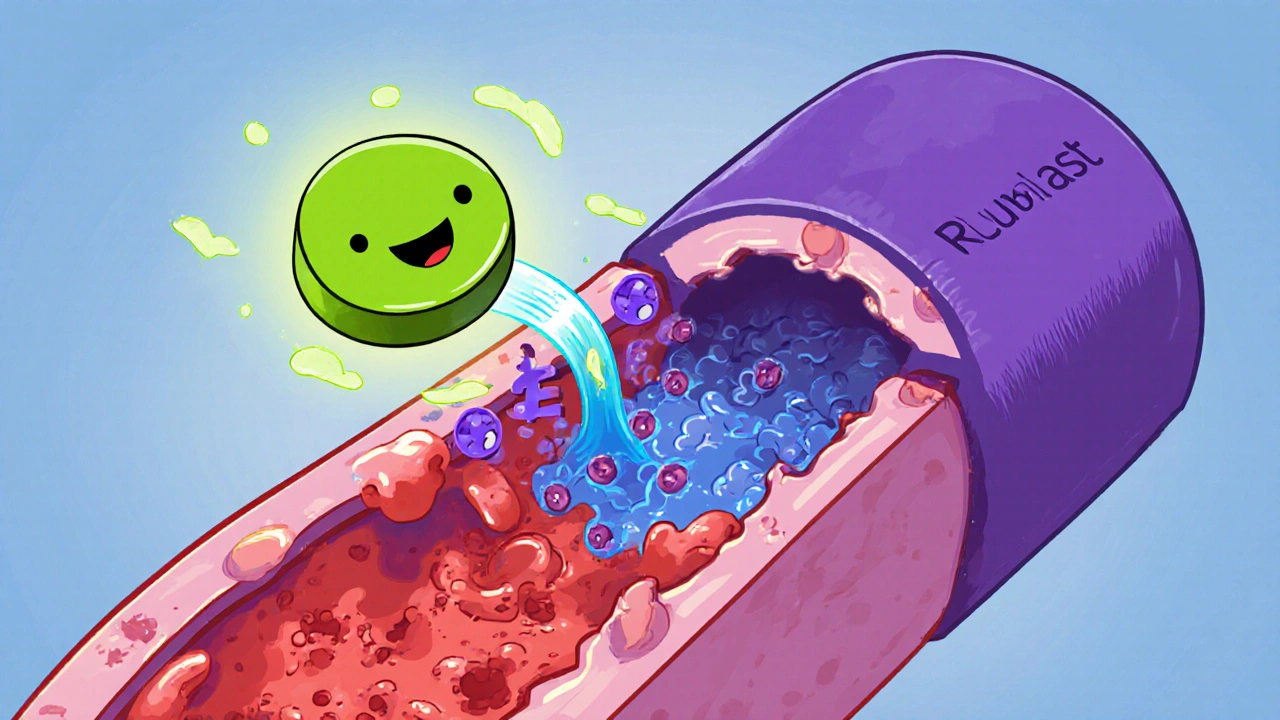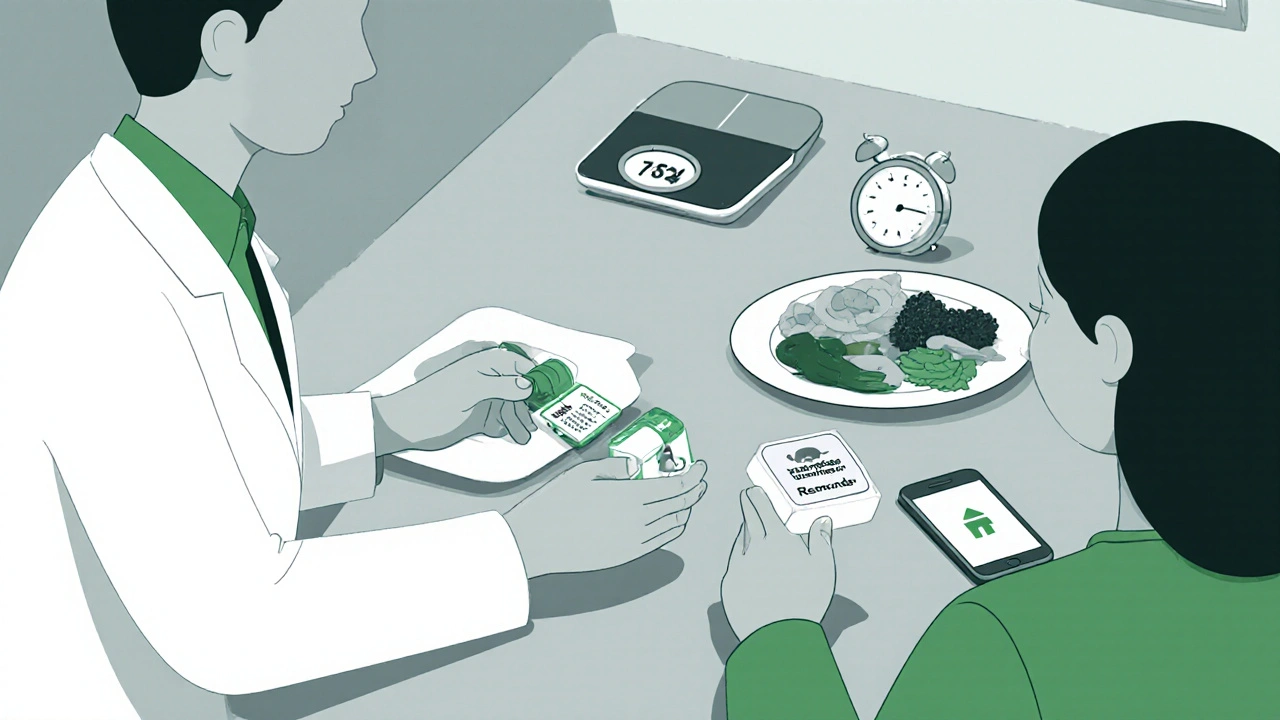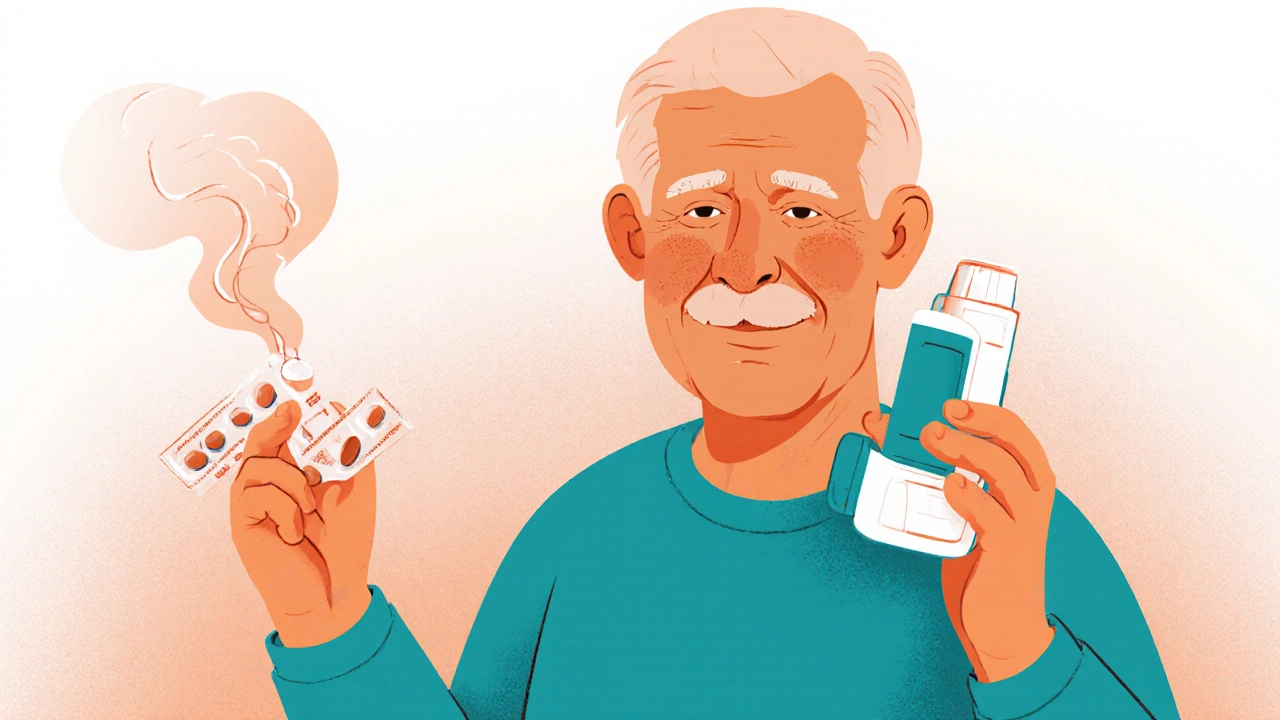COPD Treatment Decision Tool
COPD Treatment Decision Tool
This tool helps determine if Roflumilast is appropriate for your COPD management based on GOLD guidelines. It evaluates whether you meet the criteria for this add-on therapy.
Eligibility Results
Criteria Met
Recommendation
Based on GOLD 2024 guidelines, you may be a candidate for roflumilast as an add-on therapy to reduce exacerbation risk.
Next Steps
- Consult with your physician to confirm eligibility
- Ensure adherence to current inhaler therapy
- Discuss potential benefits and side effects of roflumilast
Living with chronic obstructive pulmonary disease (COPD) is a daily battle against breathlessness, coughing, and the constant fear of a flare‑up. While inhalers remain the cornerstone of therapy, a growing number of clinicians are adding a pill to the mix: Roflumilast. This article unpacks why that oral drug matters, who should take it, and how it fits into today’s COPD playbook.
Understanding COPD
COPD is a progressive lung disease characterized by irreversible airflow limitation, typically caused by long‑term exposure to noxious particles such as cigarette smoke. According to the World Health Organization, COPD kills more than three million people each year, making it the third leading cause of death worldwide. The disease manifests as chronic bronchitis, emphysema, or a mix of both, and patients often experience a cycle of worsening symptoms called exacerbations.
Exacerbations are not just uncomfortable-they accelerate lung function loss, increase hospital admissions, and raise mortality risk. Preventing these flare‑ups is therefore a primary therapeutic goal.
What is Roflumilast?
Roflumilast is a phosphodiesterase‑4 (PDE4) inhibitor taken once daily in tablet form. By blocking the PDE4 enzyme, it reduces inflammation in the airways and lungs, addressing one of the root contributors to COPD exacerbations.
Unlike most COPD drugs that act locally in the lungs, roflumilast works systemically, which means it can reach inflammatory cells throughout the respiratory tract and even the systemic circulation.
How Roflumilast Works - The PDE4 Connection
The PDE4 enzyme breaks down cyclic AMP (cAMP), a molecule that dampens inflammatory signaling. When PDE4 is inhibited, cAMP levels rise, leading to decreased release of pro‑inflammatory cytokines such as TNF‑α, IL‑6, and IL‑8. This cascade results in less neutrophil recruitment, reduced mucus hypersecretion, and ultimately fewer exacerbations.
Because inflammation drives both symptom burden and disease progression, targeting PDE4 offers a complementary approach to bronchodilation.
Evidence From Clinical Trials
Two pivotal Phase III trials-the M2‑124 and M2‑125 studies-enrolled over 2,300 patients with severe to very severe COPD and a history of frequent exacerbations. Participants received roflumilast 500 µg orally once daily on top of their usual inhaled therapy.
- After 12 months, the roflumilast group experienced a 15‑20% reduction in moderate‑to‑severe exacerbations compared with placebo.
- Lung function, measured by post‑bronchodilator FEV1, improved modestly (average increase of 45 mL).
- Health‑related quality‑of‑life scores (St. George’s Respiratory Questionnaire) showed a clinically meaningful gain of 4 points.
Subgroup analyses revealed the greatest benefit in patients who were already on inhaled corticosteroids (ICS) and long‑acting bronchodilators, reinforcing roflumilast’s role as an add‑on therapy.

Where Roflumilast Fits Into GOLD Guidelines
GOLD guidelines classify COPD patients based on symptom burden (mMRC or CAT scores) and exacerbation risk (history of two or more moderate exacerbations, or one severe exacerbation, in the past year). The 2024 update recommends roflumilast for patients who:
- Have severe (GOLD D) disease with frequent exacerbations despite optimal inhaled therapy.
- Are on a combination of long‑acting bronchodilators (LABA/LAMA) and inhaled corticosteroids, yet still experience flare‑ups.
- Do not have contraindications such as active, uncontrolled infections or severe liver disease.
In practice, clinicians often start roflumilast after confirming adherence to inhaler technique and encouraging smoking cessation-both of which dramatically affect outcomes.
Practical Prescribing Tips
Below is a quick checklist for clinicians stepping into roflumilast therapy:
- Start dose: 500 µg orally once daily, taken with food to improve tolerability.
- Renal/hepatic adjustment: No dose change for mild‑to‑moderate impairment; avoid in severe hepatic dysfunction (Child‑Pugh C).
- Monitoring: Check weight, mood, and GI symptoms at baseline and after 2-4 weeks. Labs (ALT/AST) should be measured before initiation and quarterly thereafter.
- Common side effects: Nausea, diarrhea, loss of appetite, weight loss, and occasional insomnia. These usually resolve within the first month.
- Contraindications: Active TB, uncontrolled infection, significant psychiatric illness, or known hypersensitivity.
If side effects become intolerable, consider a dose reduction to 250 µg (though evidence for efficacy at this lower dose is limited).
Comparing Roflumilast With Other Add‑On Options
| Feature | Roflumilast | Inhaled Corticosteroids (ICS) | Long‑acting Muscarinic Antagonists (LAMA) |
|---|---|---|---|
| Mechanism | Systemic PDE4 inhibition - reduces airway inflammation | Local glucocorticoid receptor activation - anti‑inflammatory | Bronchial smooth‑muscle relaxation via muscarinic blockade |
| Administration | Oral tablet once daily | Inhaled, usually twice daily | Inhaled, once daily |
| Primary benefit | Reduced exacerbation rate in severe COPD | Improved symptoms, reduced exacerbations (when combined with bronchodilators) | Improved lung function, symptom control |
| Common side effects | Nausea, diarrhea, weight loss, insomnia | Oral thrush, hoarseness, pneumonia risk | Dry mouth, urinary retention (rare) |
| Typical patient profile | Severe COPD, frequent exacerbations despite optimal inhalers | Patients with eosinophilic inflammation or frequent exacerbations | Patients needing bronchodilation without systemic inflammation focus |
Choosing between these options isn’t a one‑size‑fits‑all decision. Roflumilast shines when systemic inflammation is a dominant driver and inhaler adherence is already optimal.

Patient-Centered Considerations
Even the best drug won’t work if patients can’t stick with it. Here are three real‑world tips that clinicians and pharmacists can share:
- Smoking cessation: Continue to stress that quitting smoking is the single most effective step to slow disease progression. Offer nicotine‑replacement therapy or referral to cessation programs.
- Nutrition monitoring: Because roflumilast can cause weight loss, schedule regular weight checks and discuss high‑calorie, nutrient‑dense meals.
- Adherence aids: Use pillboxes, smartphone reminders, or once‑monthly pharmacy refill synchronizations to keep the daily tablet from slipping the mind.
When patients voice concerns about side effects, reassure them that most GI symptoms improve after the first few weeks, and that dose reduction is sometimes possible.
Key Takeaways
- Roflumilast is a PDE4 inhibitor that targets inflammation, not just bronchoconstriction.
- Clinical trials show a 15‑20% cut in moderate‑to‑severe COPD exacerbations when added to optimal inhaled therapy.
- The 2024 GOLD guidelines place roflumilast as an add‑on for GOLD D patients with frequent flare‑ups despite LABA/LAMA + ICS.
- Common adverse effects are GI‑related and tend to resolve; monitor weight and mood early.
- Success hinges on smoking cessation, good inhaler technique, and regular follow‑up.
Frequently Asked Questions
Who should consider taking roflumilast?
Patients with severe (GOLD D) COPD who have at least two moderate exacerbations or one severe exacerbation in the past year despite using a LABA/LAMA combination and inhaled corticosteroids are typical candidates.
How long does it take to see benefits?
Reductions in exacerbation frequency generally become apparent after 3‑4 months of consistent use, although some patients notice symptom improvement earlier.
Can roflumilast be used with other COPD drugs?
Yes. Roflumilast is designed as an add‑on to inhaled therapies like LABA/LAMA combinations and inhaled corticosteroids. It should not replace any bronchodilator.
What are the main side effects and how can they be managed?
The most common adverse events are nausea, diarrhea, loss of appetite, and weight loss. Taking the tablet with food, starting at a lower dose (250 µg) for very sensitive patients, and providing dietary counseling can mitigate these issues.
Is roflumilast safe for people with liver disease?
Roflumilast is metabolized in the liver. It is contraindicated in severe hepatic impairment (Child‑Pugh C). For mild‑to‑moderate liver dysfunction, dose adjustment is not required, but liver enzymes should be monitored.

Comments (15)